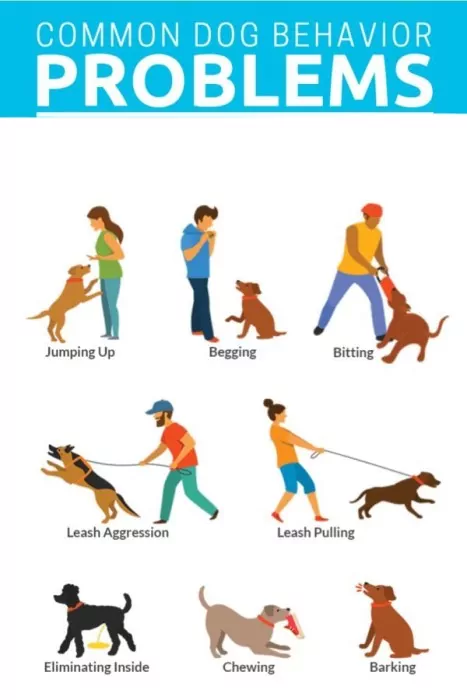Master Important Commands: Effective Pet Educating Facilitated
Efficient pet dog training is an essential aspect of responsible animal possession, and grasping vital commands serves as the structure for a harmonious relationship in between trainer and pet dog. Recognizing the subtleties of canine habits and the training procedure is key; nevertheless, the journey to a trained pet dog typically offers unforeseen hurdles that need attention.
Recognizing Your Canine's Actions
To comprehend the subtleties of efficient canine training, it is important to break down and evaluate your dog's behavior. Dog training. Understanding the inspirations behind your dog's activities is important; behaviors can originate from impulse, fear, exhilaration, or a desire for attention. By observing your pet in different situations, you can identify patterns that may show underlying emotions or needs
As an example, a canine that barks exceedingly may be revealing monotony, stress and anxiety, or a demand for social interaction. Alternatively, a canine that displays damaging behaviors might be seeking stimulation or alleviation from stress. Identifying these triggers permits you to tailor your training approach properly.
Additionally, it is crucial to think about the dog's breed characteristics, as they can influence actions substantially. Some breeds are inclined to particular characteristics, such as herding or securing instincts, which can affect their reactions to specific stimulations.
Lastly, uniformity in your responses to your pet's habits cultivates a much better understanding in between you and your family pet. This shared understanding is foundational for constructing count on and facilitating a reliable training process that supports both behavioral correction and favorable reinforcement.
Vital Commands to Educate
Educating necessary commands is a fundamental element of efficient pet training, providing the structure for a well-behaved and responsive animal. These commands not only enhance interaction in between the owner and the pet dog however also make certain safety in various environments.
The most important commands include "Sit," which motivates your canine to remain fixed and tranquil; "Keep," which reinforces the idea of remaining in one location up until launched; and "Come," which is important for remembering your pet from possibly harmful circumstances. "Down" instructs dogs to rest, promoting leisure and control, while "Leave it" aids stop pet dogs from grabbing hazardous or unwanted things.
" Heel" is an additional important command that encourages your pet dog to stroll carefully beside you, boosting chain good manners. "No" serves as a vital boundary-setting command, helping to fix unwanted behaviors.
Training Techniques for Success
Reliable pet dog training relies greatly on utilizing a selection of techniques that accommodate both the pet's discovering design and the proprietor's training goals. One essential approach is favorable reinforcement, which involves rewarding wanted behaviors with deals with, praise, or play. This method encourages the pet to duplicate those actions, cultivating a strong bond between owner and family pet.

An additional effective method is clicker training, where a distinct sound, made by a remote control, marks the exact minute a dog performs a desired action. This exact timing assists canines connect the actions with the reward, boosting their understanding.
Consistency is click this vital in all training methods. Establishing clear commands and preserving the same hints aids the canine grasp expectations much more quickly. In addition, brief, engaging training sessions avoid monotony and increase retention.
Integrating socializing possibilities is likewise important. Revealing pet dogs to various settings, individuals, and various other animals aids them establish confidence and versatility.
Finally, perseverance plays a why not try these out significant duty in effective training - Dog training. Each pet finds out at their very own speed, and understanding this can lead to an extra pleasurable training experience for both the owner and the pet dog. Executing these techniques will establish the structure for effective pet training
Typical Difficulties and Solutions
In spite of the most effective training methods, pet dog owners usually run into typical challenges that can hinder development. One prevalent concern is incongruity in commands and signs. When member of the family utilize different commands for the very same habits, it puzzles the pet, leading to inconsistent responses. The service depends on establishing a unified method amongst all relative, ensuring that everyone makes use of the same terminology and signals.

In addition, some canines may show stubbornness or lack inspiration. This can often be resolved by incorporating favorable support strategies, such as deals with or appreciation, to motivate wanted behaviors. Tailoring benefits to what your pet dog finds most motivating can considerably enhance their involvement.
Last but not least, anxiety or anxiousness can restrain development in training. Acknowledging indications of tension and changing the training speed accordingly is crucial. Utilizing gradual exposure to feared stimuli can help build confidence over time, facilitating a much more efficient training experience.
Maintaining Consistency and Persistence
Uniformity and perseverance are extremely important in dog training, as they form the foundation for achieving lasting behavior adjustments. Pets grow on regular and this contact form clear expectations; thus, keeping a regular approach in commands, rewards, and modifications is important.
Equally important is the duty of perseverance. Educating a pet dog is not an immediate process; it calls for time and repeating. Pets, a lot like human beings, have differing learning paces and might not grasp commands quickly. Instructors have to acknowledge this and continue to be calm, offering encouragement as opposed to aggravation. Favorable reinforcement plays a vital function here, rewarding wanted habits and helping to cultivate a trusting connection between the dog and instructor.
Conclusion
Grasping essential commands is essential to efficient dog training, fostering enhanced communication and reinforcing favorable habits. The application of positive reinforcement techniques, combined with consistency and patience, substantially improves the training experience for both the pet and handler. Addressing common difficulties with sensible options even more supports the training process. Ultimately, a well-trained pet dog not just displays etiquette yet also establishes confidence, contributing to an unified connection between the pet and its owner.